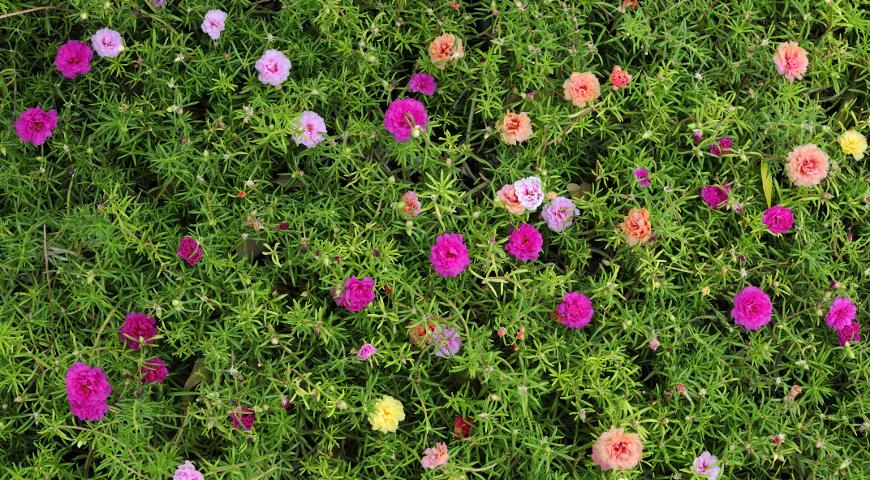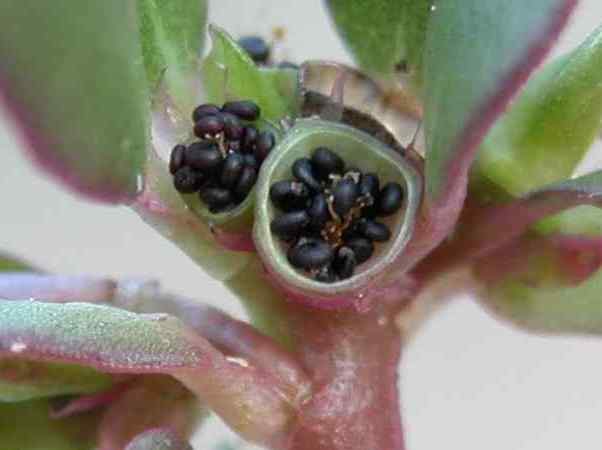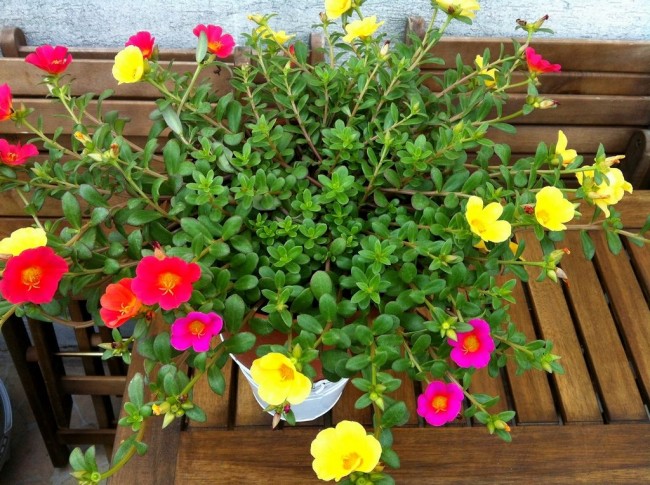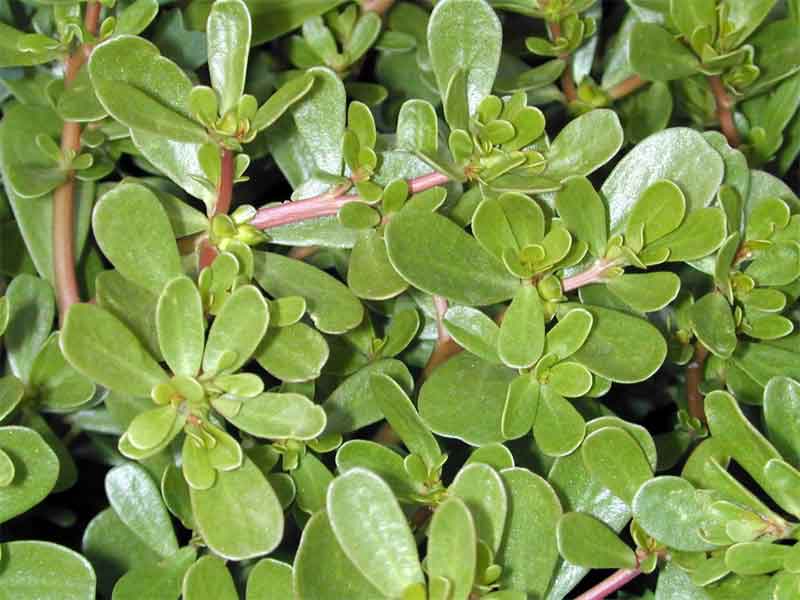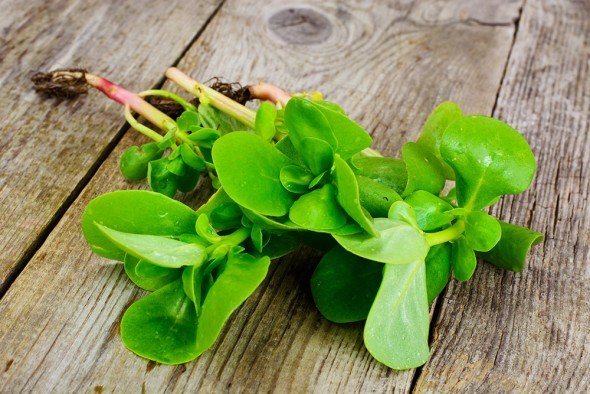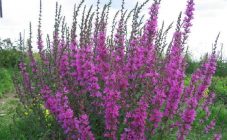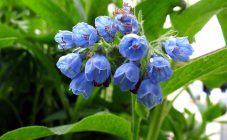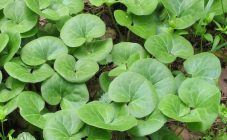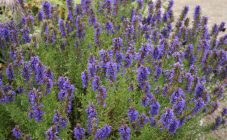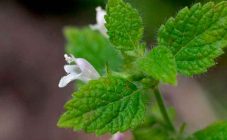Content:
Purslane is an annual plant of the purslane family, often weedy, succulent. It stores moisture and nutrients in thick shoots, tolerates periods of drought, and is undemanding to soils. It is characterized by the richest content of vitamins and physiologically active substances, can be grown as a medicinal product and a valuable food product.
Description and distribution
The purslane has outstretched juicy stems of reddish or burgundy-purple color, 10-30 cm long, a short isthmus from the root to the branching of shoots. The leaves are juicy, fleshy, which is why the plant is often called "oily grass" or "plump grass". The leaf blade is obovate. The lower leaves are attached to the stems in a spiral order, the upper leaves sit opposite each other.
The flowers are small, yellowish, inconspicuous, formed in the branches of shoots or leaf sinuses throughout the summer. In the decorative form of purslane, the flowers are larger, up to 3-4 cm in diameter, have five or more petals, simple or double, in the center there is a yellow spot around the bright yellow shaggy stamens. The flowers are white, yellow, red in color. The seeds of both forms are small, black, look like a very small poppy, ripen in a box, which opens like a box, and is called a lid.
Purslane is a widespread herb, found everywhere in the European part of the country, in the Caucasus and the Far East. It is a permanent inhabitant of vegetable gardens, fields, territories adjacent to summer cottages and gardens. A herb that looks like a purslane is found on river banks. Prefers light, permeable soils with a lot of sand.
How to grow garden purslane
There are 100 known varieties of purslane. A typical look is garden purslane. In Caucasian, Mediterranean and Central Asian cuisine, this plant is used as a side dish for meat, in the form of spicy salads, it is salted and pickled. In Armenia, purslane is called "dandur grass", "Armenian cabbage", in Turkey - "seven otu".
Another variety of purslane that deserves the attention of gardeners is the large-flowered or decorative purslane. In landscape design, this form is used as a ground cover plant for planting in small flower beds, flowerpots. The purslane flower is a perennial plant, grown at home, its flowering lasts all year without interruption.
Purslane herb grows independently by scattering seeds at the end of summer from vegetated plants. In the fall for the purslane, you need to prepare a separate bed, to which in the spring the plants will be transferred, which randomly ascended throughout the garden. The bed is dug onto a shovel bayonet, filled with river sand 40-50 kg per 1 m2 of the bed, well-rotted manure is added 15-20 kg / m2.
In late April - early May, when all the weeds in the garden have appeared, they carefully dig out with a shovel and plant the best specimens of fat grass in a prepared bed in advance, the garden is weeded.In the future, it will be easier to control weeds, the purslane grass in the garden will be thick, suitable for eating.
How to grow a decorative purslane
Planting a purslane flower and caring for it is similar to a vegetable crop, but the seeds must be harvested in advance and stored in places inaccessible to rodents. If mice start to squeak in the pantry in winter, the seeds should be removed immediately. Especially decorative purslane varieties can be purchased at specialized stores. Sowing is carried out in April under a film, the seeds are not covered. In May, the seedlings are transplanted to a permanent place in flower beds or containers. To make the flowering abundant, the flowers are fed with Azophos or ammonium nitrate 30-40 g / m2.
Beneficial features
Purslane greens contain:
- proteins,
- carbohydrates,
- iron,
- zinc,
- manganese,
- copper,
- potassium,
- calcium,
- organic acids,
- vitamins E, C, PP,
- carotene,
- resinous substances.
Healers of antiquity noticed the properties of an antidote for snake and insect bites, the herb also relieves scurvy, dysentery, heals wounds. The addition of the herb as a vegetable to food has been shown to improve health and immunity.
Later, norepinephrine was found in the grass, which stimulates heart activity, increases blood pressure and stops internal bleeding. Purslane is recommended for patients with type 2 diabetes mellitus as a sugar-reducing product. The herb can be used to treat skin diseases, it is useful to add it to the daily menu in moderation.
Why purslane hurts
In general, the plant is resistant to diseases and pests, but sometimes aphids can attack young foliage. To combat this pest, spraying with solutions of green and tar soap is carried out. With unbalanced watering, foliage can become wrinkled, the grass tastes bitter and fibrous. To avoid this, watering the beds should be carried out once every 6-8 days.
How to prepare herbs for treatment
For consumption, greens are harvested before flowering, and for treatment, cleaning is carried out at the very beginning of the opening of flowers, about 4-6 weeks after germination. Each plant can be harvested 3-4 times. Shredded grass is laid out in one layer on shelves in a well-ventilated place under a canopy. Dried raw materials are stored in glassware for no more than 1 year.
Herbal infusion recipe
For oral administration as a diuretic and tonic 2 table. tablespoons of dry herbs are poured with 1.5 cups of boiling water, insisted for 1 hour, filtered. Take 1-2 tables. spoons in 30 minutes. before meals 3 times a day.
Purslane salad recipe
The grass is washed well, cut into 2.5-3 cm pieces, chopped garlic is added, seasoned with yogurt or sour cream, a few drops of olive oil are added.
Purslane herb is unpretentious, good for health, it is a folk medicine, an excellent independent dish and garnish for meat.

